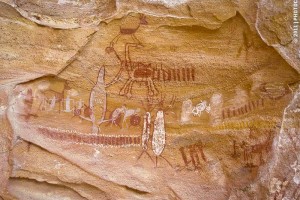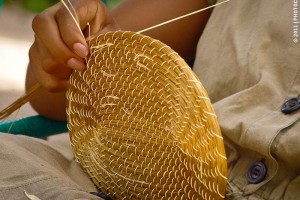1. Lajedo do Pai Mateus, Paraíba
The GPS is clueless. We trust the instructions of farmers to get us to Hotel Fazenda Pai Mateus, a large cattle ranch near Boa Vista, about 200km inland of João Pessoa.
We watch the sunset nearby at the “Place of Many Stones” (Lajedo), where dozens of smoothly polished granite boulders lie scattered over a bowl-shaped elevation above an artificial lake, as if the gods have sprinkled peppercorns over the landscape.




